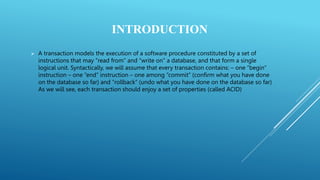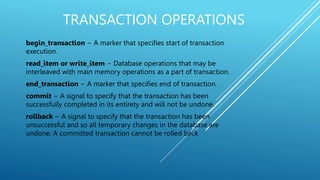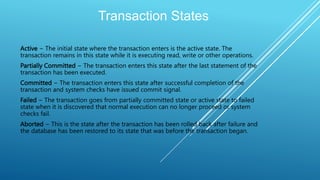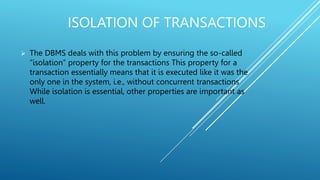This document provides an introduction to database transactions. It defines a transaction as a collection of database operations executed as a logical unit. Transactions must have the ACID properties of atomicity, consistency, isolation, and durability. The document outlines the basic operations of transactions including begin, read, write, end, commit, and rollback. It describes the states a transaction can be in like active, partially committed, committed, failed, and aborted. Isolation is discussed as ensuring transactions are executed independently without interference from other concurrent transactions. Finally, the role of the scheduler in managing new transactions and instructing the buffer manager is summarized.








